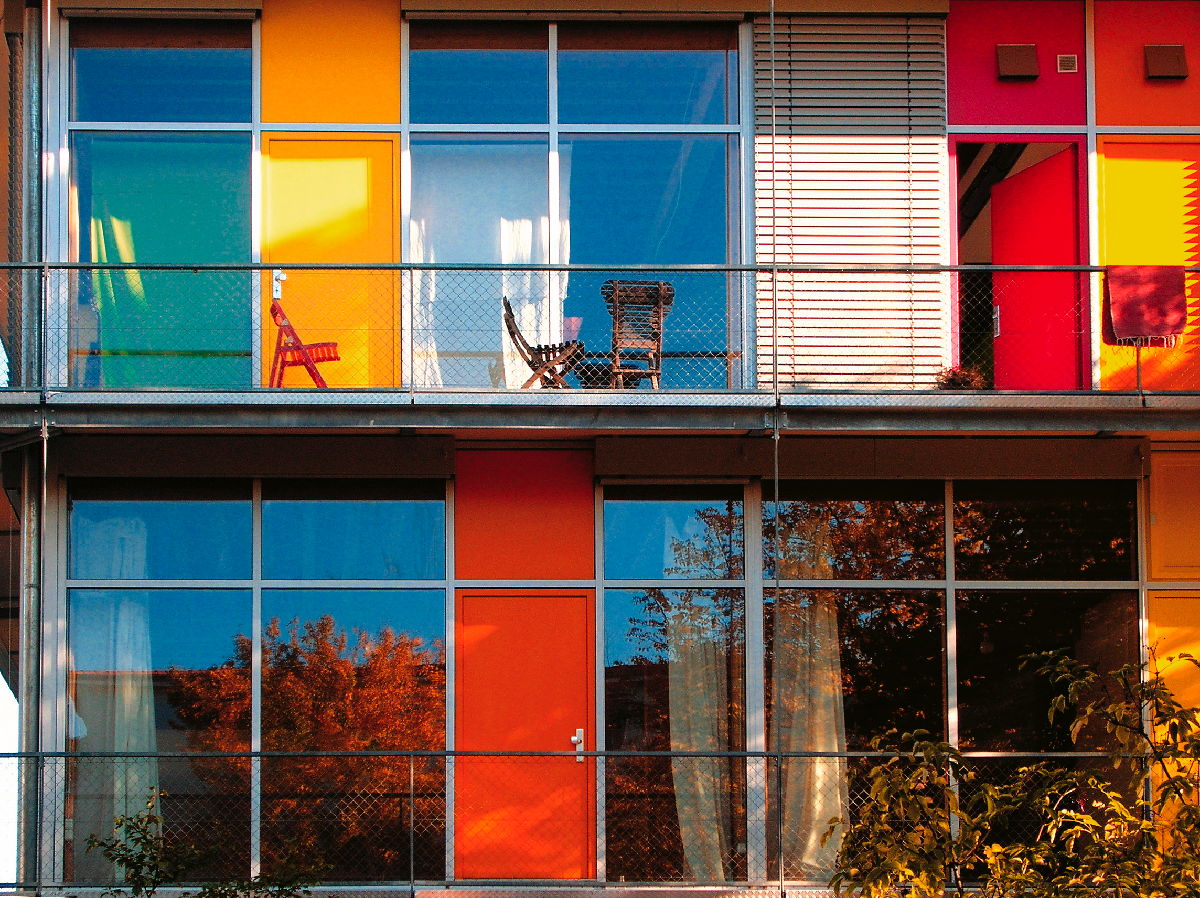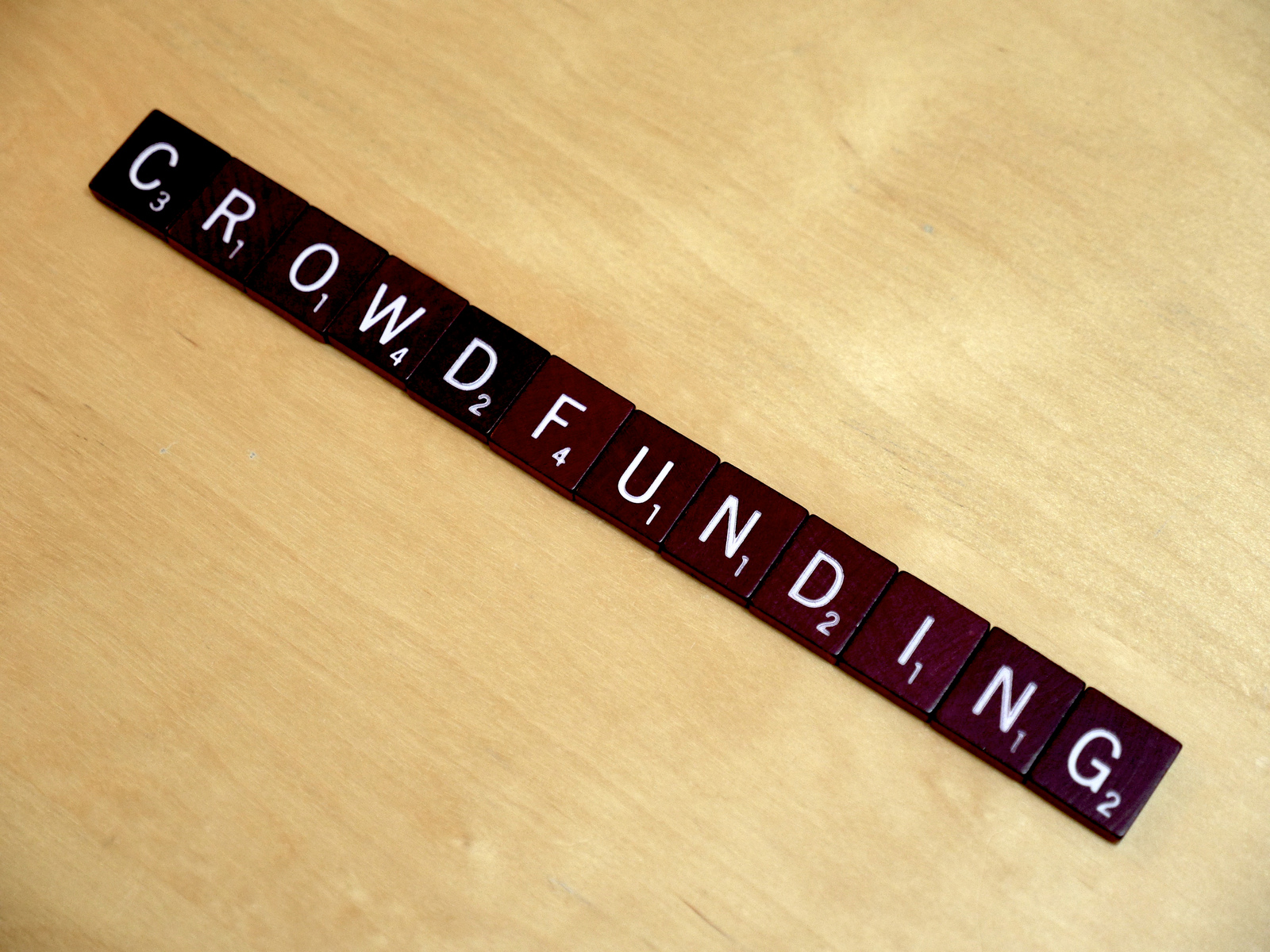Tucked away amidst tall evergreen trees of the Black Forest is the small city of Freiburg. The city and surrounding towns of the Black Forest region evoke nostalgic childhood feelings of the mystery and wonder which characterized the infamous Brothers Grimm fairytales. Walking through the streets of Freiburg, you see children play with toy boats in small waterways called “Bächele”, which beautifully frame the city streets. Looking up and peering through the sea of stunning architecture, there is a bustling farmers market in the main Münsterplatz. Here, one can find locally sourced fruits, vegetables, and wine in addition to a large assortment of traditional German food.
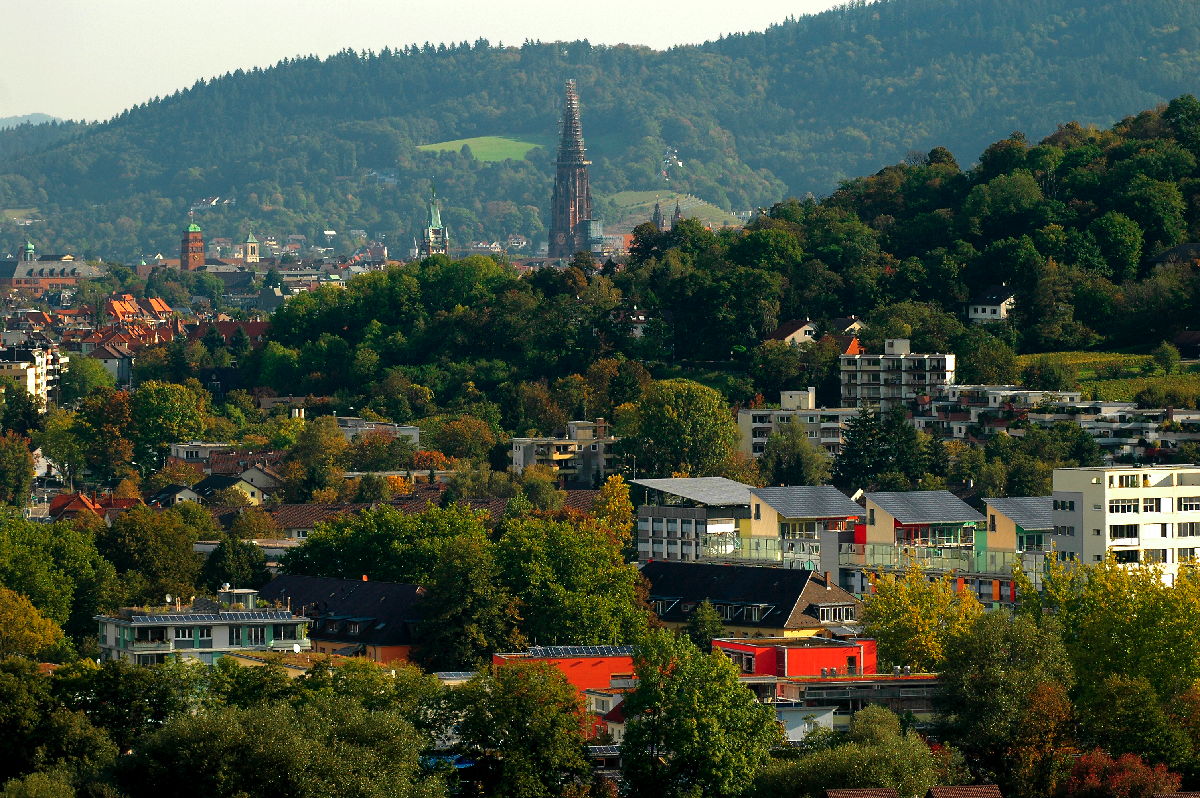 In the photo: On the forefront you have the Vauban district of Freiburg
In the photo: On the forefront you have the Vauban district of Freiburg
In the southern district of Vauban, the traditional turns into the modern as solar panel clad housing comes to the foreground. With the fairytale aura almost palpable, it’s no wonder this region was often the setting for the tales of the Brothers Grimm.
How is Freiburg maintaining this idealistic atmosphere with respect to emerging urban planning and infrastructure issues? After visiting Vauban, clues begin to emerge. This small city is taking bold steps by investing in green infrastructure and innovative community-inclusive urban planning to better safeguard their future.
………………………………………………………………………………………………………….. Related articles : REEDSY THE FOUNDER article by Claude Forthomme OIL SPILLS: A DOUBLE STANDARD WORLD article by Hannah Fisher-Lauder …………………………………………………………………………………………………………..To understand how this small city in the Black Forest became a global leader in sustainability, it’s essential to look into its past.
Most of Freiburg was destroyed as a result of WWII, and the section that would become Vauban contained military barracks occupied by French troops after the war. The destruction of the city provided an opportunity to rebuild, incorporating sustainable planning. Environmental sentiments reached a high point in 1972 when there were large protests in response to a proposed nuclear power plant in the nearby town of Wyhl. The Chernobyl nuclear disaster in 1986 galvanized support for utilizing sustainable solutions to suit the needs of an expanding Freiburg. Furthermore, the withdrawal of French troops from the military barracks in 1990 created an ideal space for an environmentally-aware Freiburg to bring its ideas to fruition as Quartier Vauban.
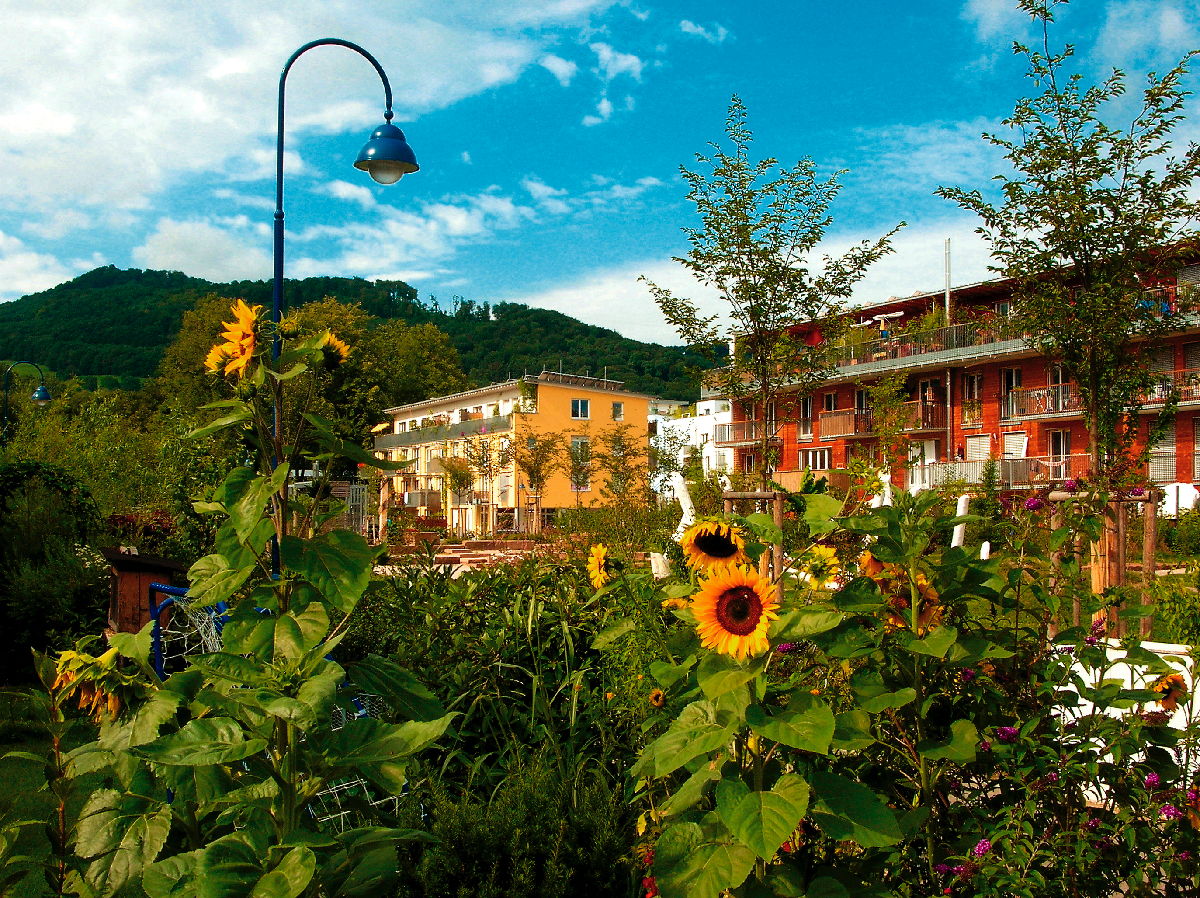 In the photo: The Vauban district is easily recognised by its eclectic color scheme
In the photo: The Vauban district is easily recognised by its eclectic color scheme
Quartier Vauban is a small relatively new district of Freiburg taking the boldest steps in housing, energy, and urban planning.
The planning for Vauban started in 1993 with the aim of “implementing a city district in a co-operative participatory way” which meets ecological, social, economic, and cultural requirements. The inclusion of residents created a space for a constant exchange of ideas in addition to an important dialogue with city officials, architects, and urban planners. In 1999, the first residents moved into Vauban, and the population has since grown to over 5,500, with more than 600 jobs making it an important economic sector of Freiburg.
Vauban is a world leader in green infrastructure, combining innovative design with sustainability to create a new concept of community. Compulsory lower energy standards, passive houses, plus energy houses, district heating grid and co-generation plant, and active uses of solar energy make up the five integral elements of green infrastructure in Vauban.
Some technical data to show the progress made. The average energy standard for German households built between 1995-2000 is 100 kWh/m2a, with older houses twice as much. In Vauban, houses are built to stricter standards (more similar to the Swiss SIA 380/1 standard than the German WSchVO’95). When adjusted to the German energy standard equivalent, houses in Vauban must have an efficiency of at least 48-55 kWh/m2a, that’s half the national standard. The 42 passive houses in Vauban take the energy standard further with 15 kWh/m2a, and the 10 plus energy houses produce more energy than they consume.
An additional 50 passive houses are in development, and investors aim to sell 100-200 more plus energy houses. In 2002, the high efficient co-generation plant connected to the heating grid began operating on woodchips. Furthermore, there is 450 m2 of solar collectors in the original section of Vauban. Steadfast commitment to solar energy remains essential to the livelihood of Vauban; therefore, this figure continues to increase with further investment in solar energy and in Vauban’s expansion.
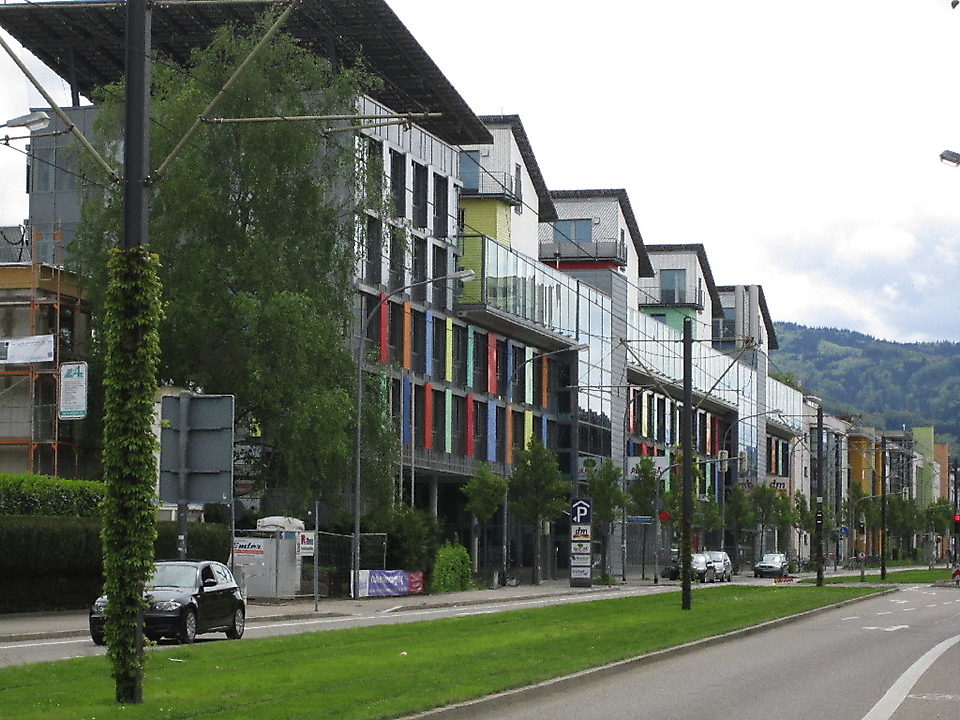 In the photo: The lack of cars in the streets is a characteristics of Vauban district
In the photo: The lack of cars in the streets is a characteristics of Vauban district
Infrastructure is utilized through smart transportation planning and communication to form the sustainable community. Vauban incentives a car-free concept by requiring residents to pay 18,000 Euros a year for parking. If a resident chooses to own a car and pay the fee, it must be parked in the community parking garage in the outer area of Vauban. As a result, this creates ample pedestrian/bicycle zones within the community in addition to the freedom to place grocery stores, schools, and other companies within walking or biking distance from any home. Additionally, this brings community members together in public spaces making a trip to the grocery store a social event. Consequently, residents of Vauban experience a heightened sense of community and security.
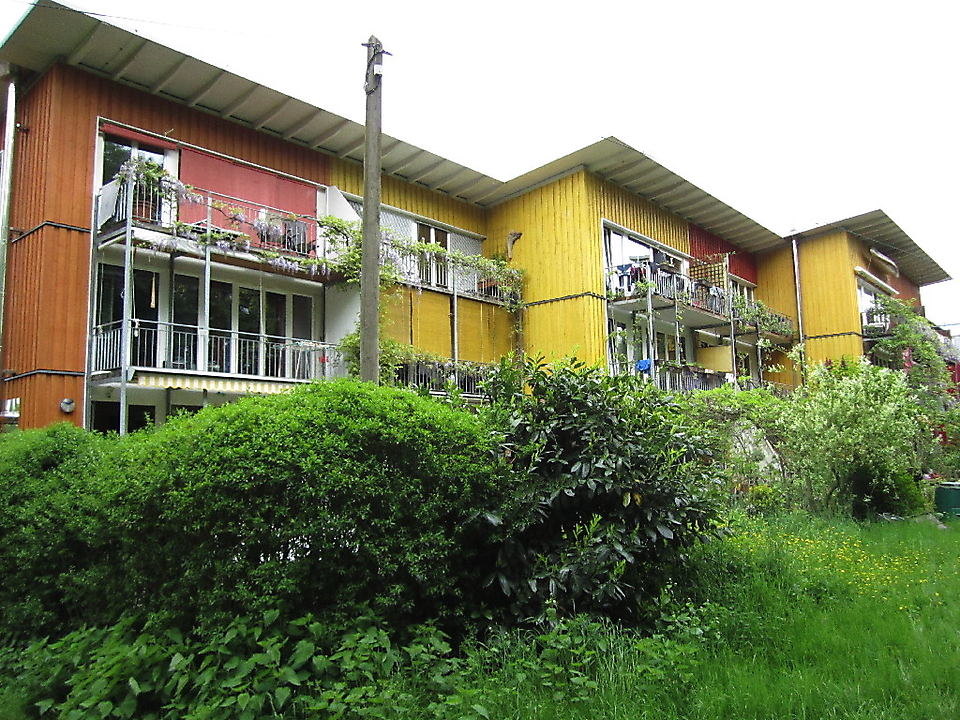 In the photo: Wooden paneling on some façades have been used
In the photo: Wooden paneling on some façades have been used
The story of Vauban is a lesson in opportunity. Freiburgers were able to see through ruin and frame their circumstance with sustainability to build a brighter future. This nuanced thinking of the people of Freiburg allowed for them to stay true to the fairytale-like narratives of the region. Empowered by open dialogues and sustainability, Freiburgers continue to write their own story to safeguard their future.
More broadly, we can all follow Freiburg’s example and control our own narrative. Yes, there are complicated emerging issues regarding community development, organization, and infrastructure, but when we seek out opportunity even in the face of immense adversity, we can find the empty canvas, the blank slate, the unwritten pages of a book and create a better future.


